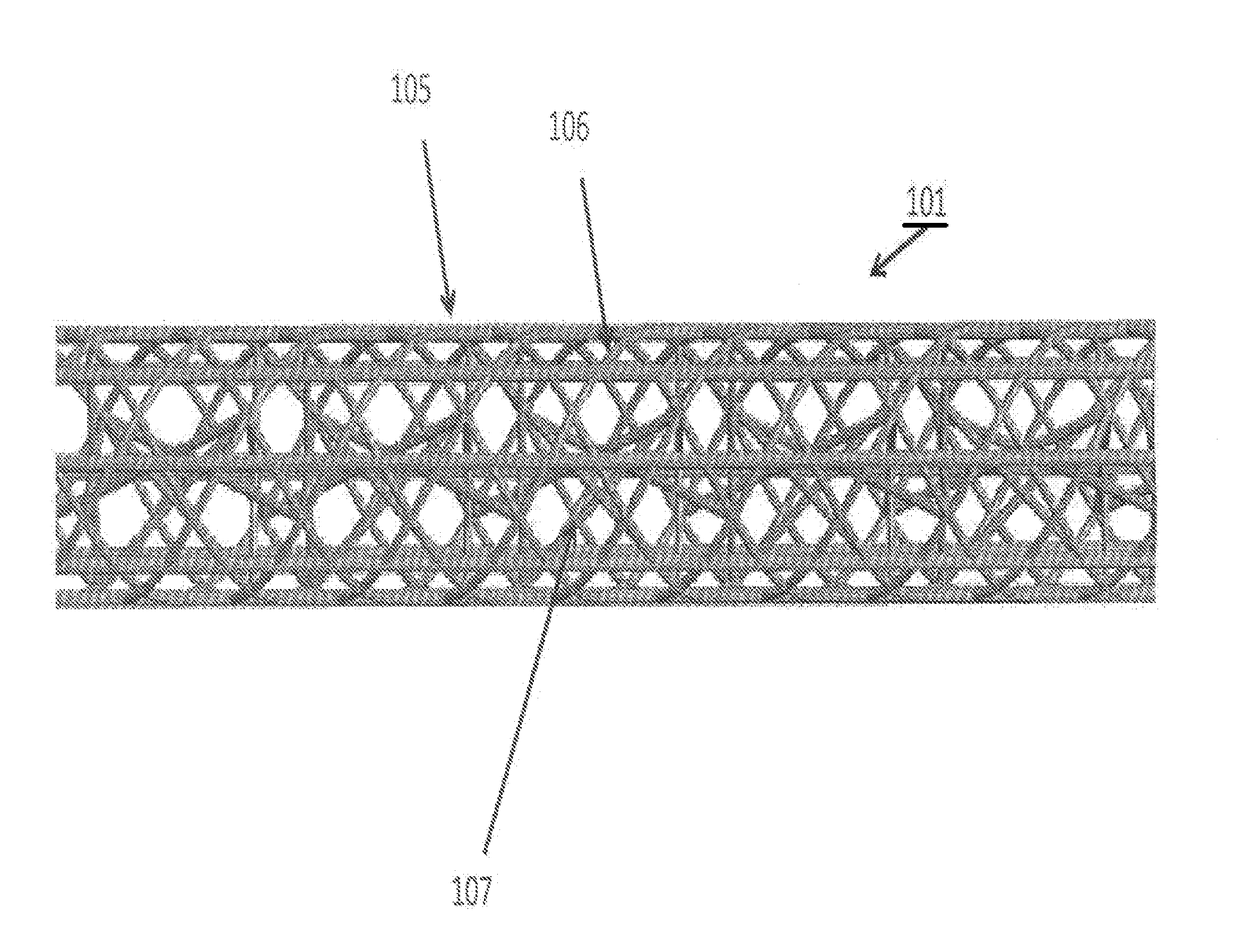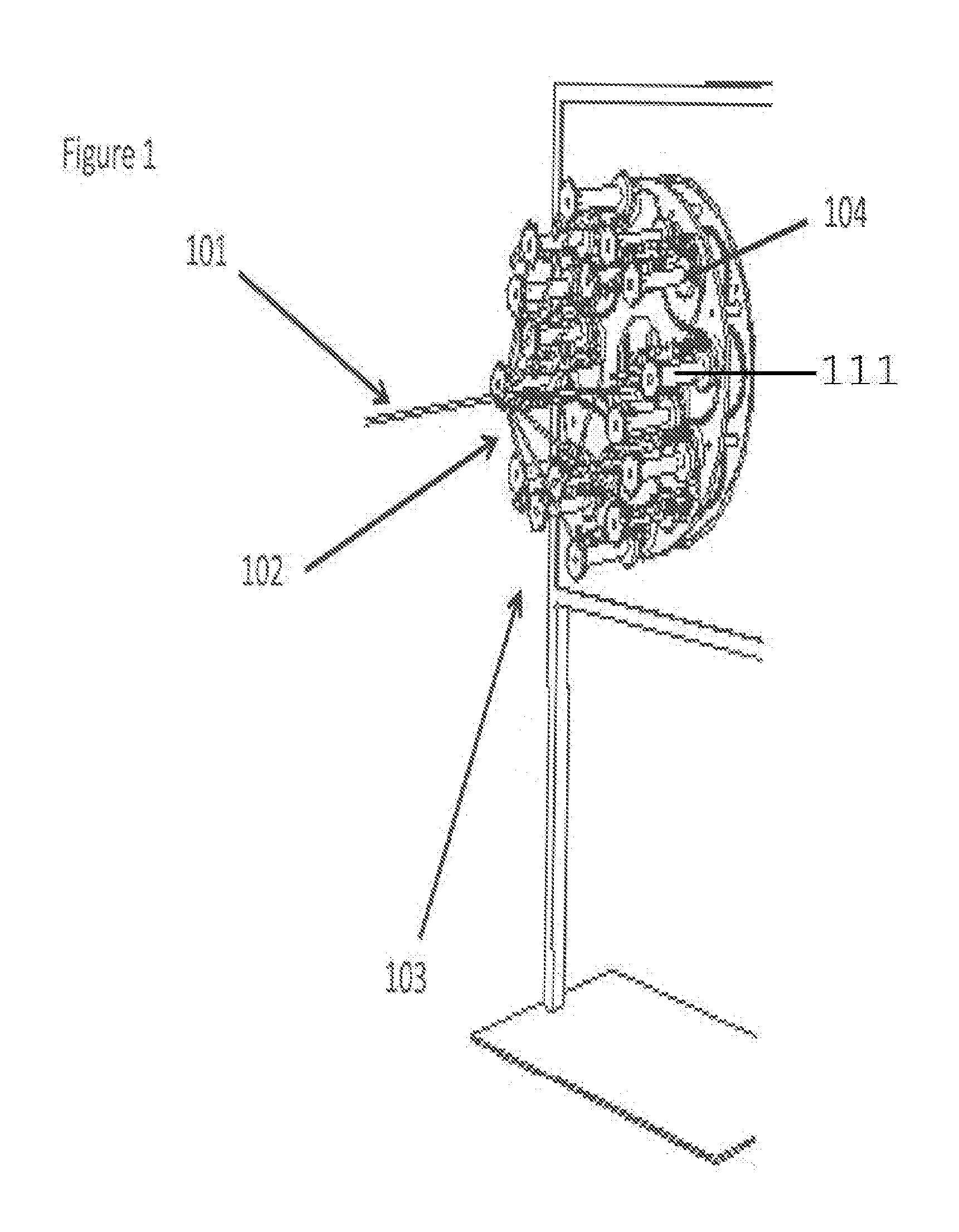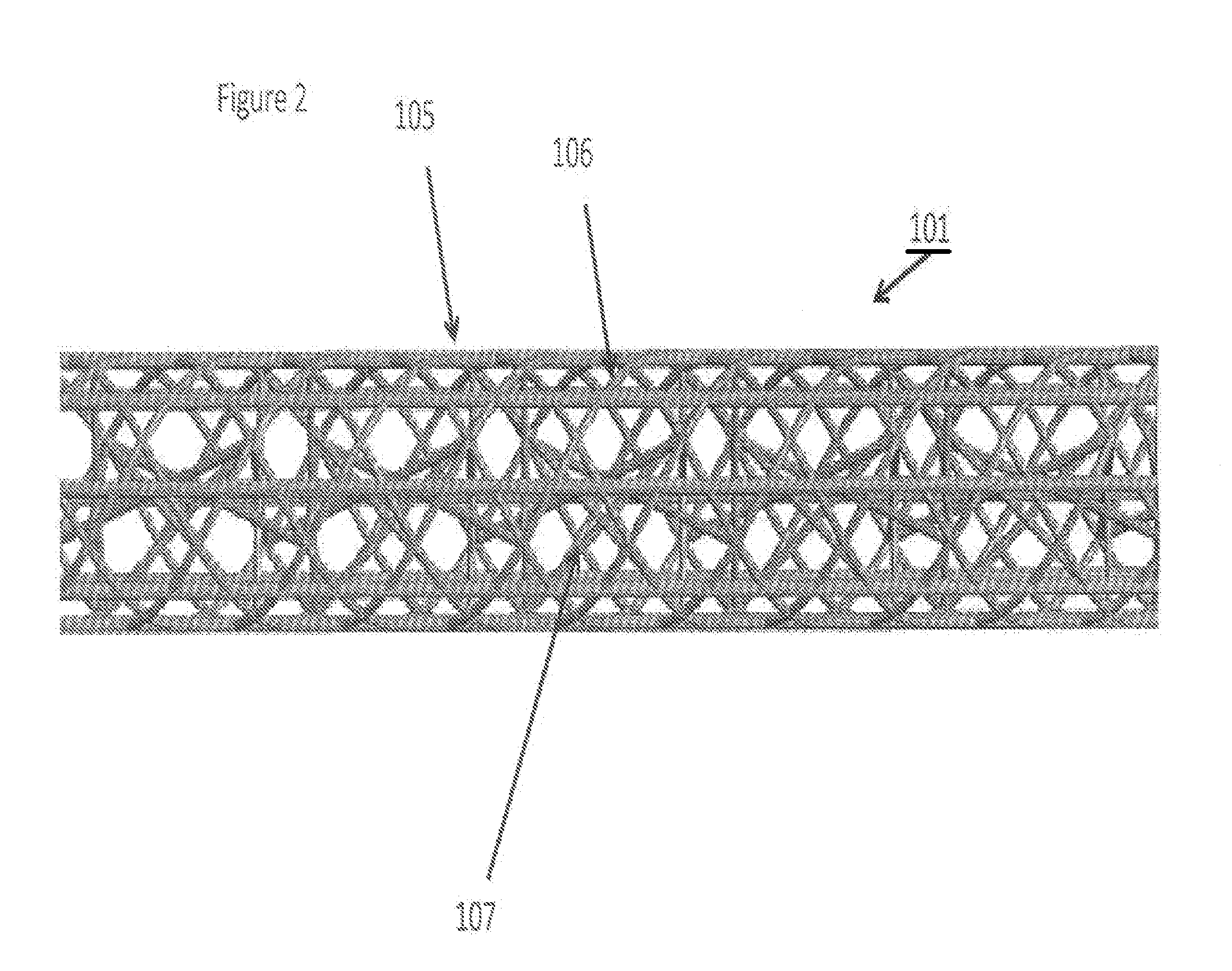Minimal weight composites using open structure
a composite material and open structure technology, applied in the direction of girders, braids, transportation and packaging, etc., can solve the problems of voids, thickening of nodes at the intersections of tapes, and difficult infusion of large structural elements with resin, etc., to achieve fast manufacturing process, simple process, and removal of mandrels
- Summary
- Abstract
- Description
- Claims
- Application Information
AI Technical Summary
Benefits of technology
Problems solved by technology
Method used
Image
Examples
example 1
[0044]An open structured cylinder (101) was made according to the teaching of this invention, but similar in size and weight per unit length to an energy drink can and similar in size and weight to a prepreg braided sleeve constructed of carbon fiber and epoxy resin. The structure was made from a 36 k assembled prepreg carbon yarn (102) (from TCR Composites) core with eight helical yarns in the jacket. The jacket yarns were 200 denier Vectran™ yarns which were braided around the 32 prepreg tow carrier jacket. The jacket consists of eight helical yarns and eight axial yarns arranged in a true triaxial configuration. The open structured composite (101) was made on a 32-carrier maypole braider (103) with four helical yarns (106) and four axial yarns (105) in the true triaxial structure (as shown in FIG. 7). In the true triaxial structure, the axial yarns (105) interlace with the helical yarns. The crossover joints in this structure (101) were reinforced with additional epoxy resin. Bot...
example 2
[0045]Open structured cylinders (101) similar to that disclosed in Example 1 may be assembled into larger structures like that shown in FIG. 6. FIG. 6 is a drawing of a framework for a human powered vehicle for a student “moonbuggy” competition at NASA's Marshall Space Flight Center. The framework was constructed of cylindrical open structured trusses (101) produced in accordance with the teachings of this invention using the z direction reinforcement (107) of yarn intersection joints shown in FIGS. 2, 3, and 4.
example 3
[0046]An open truss structure was constructed using jacketed 36 k carbon prepreg yarns (102)—namely, three axial (105) and eight helical (106) prepreg yarns—in a true triaxial configuration. A mandrel (108) of triangular cross section was used. Each helical prepreg yarn (106) was flanked by 2 Kevlar™ 1000 denier yarns. The structure was cured on the mandrel (108) to set the shape and then the smaller Kevlar™ flanker yarns (109) and the joints were coated with resin before curing again. The Kevlar™ yarns (109) were on either side of the cured yarns (102). The flanking yarns (109) helped to stabilize the joints. The geometry of the structure (101) is shown in FIG. 9 and in enlarged view (FIG. 10).
PUM
| Property | Measurement | Unit |
|---|---|---|
| diameter | aaaaa | aaaaa |
| diameter | aaaaa | aaaaa |
| strength | aaaaa | aaaaa |
Abstract
Description
Claims
Application Information
 Login to View More
Login to View More - R&D
- Intellectual Property
- Life Sciences
- Materials
- Tech Scout
- Unparalleled Data Quality
- Higher Quality Content
- 60% Fewer Hallucinations
Browse by: Latest US Patents, China's latest patents, Technical Efficacy Thesaurus, Application Domain, Technology Topic, Popular Technical Reports.
© 2025 PatSnap. All rights reserved.Legal|Privacy policy|Modern Slavery Act Transparency Statement|Sitemap|About US| Contact US: help@patsnap.com



